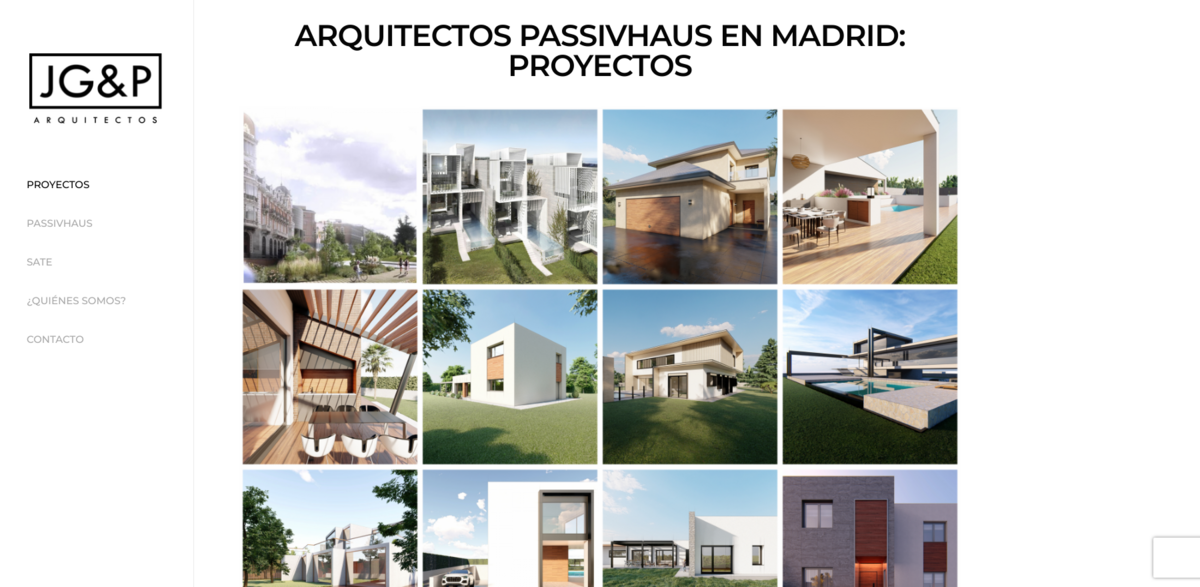Exploring the Architects Passivhaus Projects in Madrid
Madrid’s architectural scene has embraced sustainability with a series of innovative Passivhaus and NZEB (Nearly Zero Energy Building) projects. From cozy single-family homes in Pozuelo and Griñón to ambitious urban developments like Lagospark in Las Rozas, these projects showcase a commitment to energy efficiency and modern design. Whether it’s a passive house with a pool in Valdemarín or a cutting-edge library for the British Council, the portfolio is diverse and inspiring. These projects don’t just meet standards—they push boundaries in sustainable architecture.
Main Benefits of Passivhaus and NZEB Projects
These projects come packed with impressive benefits, including:
- Significant reduction in energy consumption, often achieving nearly zero energy use.
- Enhanced indoor air quality and comfort through superior insulation and ventilation.
- Lower carbon footprint thanks to sustainable materials and design strategies.
- Cost savings over time due to reduced heating and cooling needs.
- Versatility in design, from single-family homes to commercial spaces like the Hotel Ilunion facade rehabilitation.
Variety of Project Types and Locations
The projects span a wide range of building types and locations around Madrid and beyond. Residential projects include the “Casa Passivhaus en Pozuelo I” and “Vivienda Passivhaus Plus en Villaviciosa de Odón,” while urban developments like “Urbanización Lagospark Las Rozas-Madrid” highlight larger scale planning. There are also interior design projects such as the “Diseño Interior Oficinas Invisalign” and “Diseño Interior Joyería Don Ramón de la Cruz 13,” showing that sustainability and style go hand in hand.
Innovative Design and Energy Efficiency
Each project integrates innovative design principles that prioritize energy efficiency without sacrificing aesthetics. For example, the “Vivienda Passivhaus con Piscina – Valencia” combines luxury living with passive house standards, proving that eco-friendly homes can be both beautiful and functional. The “Reforma Energética de Vivienda en La Florida” demonstrates how existing buildings can be retrofitted to meet NZEB standards, making sustainability accessible for older properties.
Recognition and International Competitions
Some projects have gained international attention, such as the “Concurso Internacional de Arquitectura DOM3 Prize” and the “International Architecture Competition for Plaza de España.” These competitions highlight the architects’ ability to blend sustainability with innovative urban design, positioning Madrid as a leader in green architecture. Winning or participating in such contests also drives continuous improvement and creative solutions in the field.
Project Impact on Sustainable Development Goals (SDGs)
- SDG 7: Affordable and Clean Energy – through energy-efficient building designs.
- SDG 11: Sustainable Cities and Communities – by promoting eco-friendly urban developments.
- SDG 12: Responsible Consumption and Production – via sustainable materials and construction methods.
- SDG 13: Climate Action – by reducing greenhouse gas emissions from buildings.
- SDG 3: Good Health and Well-being – through improved indoor air quality and comfort.
Future Outlook and Continuing Innovation
The momentum behind Passivhaus and NZEB projects in Madrid shows no signs of slowing down. With ongoing projects like “Promoción Vivienda NZEB en Brunete” and “Promoción Passivhaus I en Moraleja de Enmedio,” the focus remains on pushing the envelope of sustainable architecture. These efforts not only contribute to a greener future but also inspire other regions to adopt similar standards. It’s clear that energy-efficient design is becoming the new norm, and Madrid’s architects are leading the way.





















